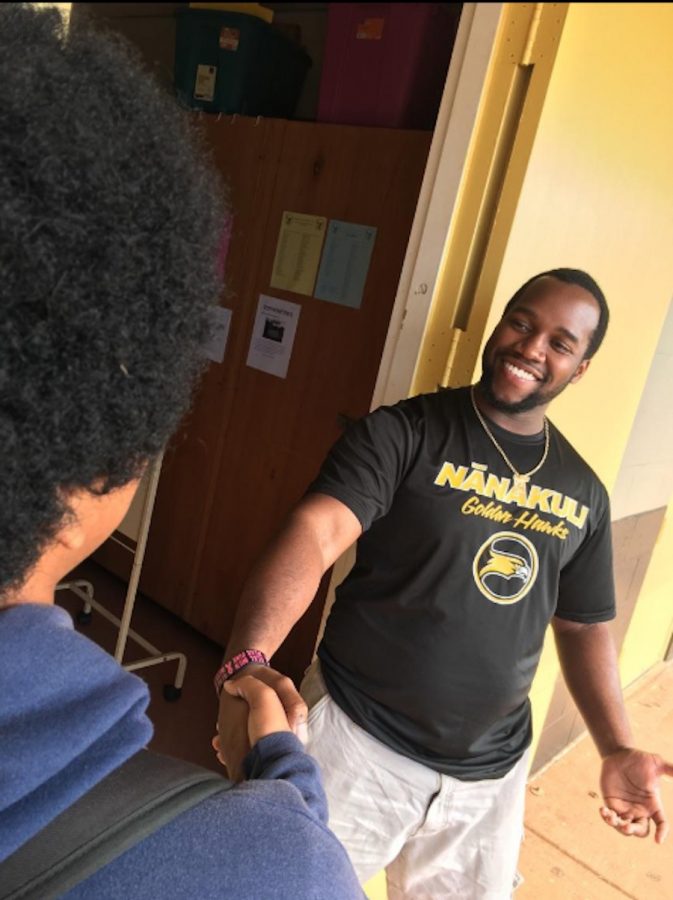Teachers’ smiles create positive classroom environment
Teacher, Cedric Abdul Akiem, practices MTSS strategy of greeting students at the door.
NHIS students may have noticed their teachers are smiling more, greeting them at the door, and giving them positive feedback on their everyday work and behavior.
Was there an unheard of alien abduction of teachers or is this a new strategy being used around the school?
NHIS is implementing the Multi-Tiered Systems of Support (MTSS) to improve student teacher relationships and behaviors in the classroom.
MTSS are different strategies that teachers use to help students and teachers improve the learning environment for everyone.
MTSS includes three Tiers, each Tier helps students based on their behavioral and academic needs.
Cara Togliatti, NHIS Instructional coach, said, ”There’s a Tier that we use for everybody; that’s Tier One. It’s what we do at school for everyone. Those are what we should be giving everybody at school.”
There is a second Tier for students, ”Sometimes you have kids that just need a little bit more, so Tier Two kind of focuses more on kids who need a little more interventions. Maybe they need peer groups, or a check in check out system, or more rewards,” said Togliatti.
Lastly there is Tier Three and that is for the students who need more behavioral support such as more one on one.
“So if Tier One doesn’t work and Tier Two doesn’t work and we still have kids who are really needing more behavior support. Those are pretty individualized support for those kids,” said Togliatti.
Many of these MTSS strategies teachers are using are Tier One supports. Most teachers already use them but now they are just focusing on them more. Teachers have said the strategies are not difficult and the focus is all about building a relationship.
“Greeting kids at the door, smiling and being nice, like building those relationships with kids because those are as important as learning,” said Togliatti.
“Students feel that these strategies would help better their learning environment if all teachers used it.”
Desiree Kanui, a seventh grader at NHIS said, ”Yes, I think it would make it a good place because students would get motivated but if the teachers don’t use it the students just feel down.”
Other students feel that the effectiveness of MTSS is dependent upon the subject.
Dashaney Santana, an eighth grader, said, ”The effectiveness of MTSS is debatable, depending on the subject of the topic because I do understand that there are certain topics that aren’t very fun to learn. For certain teachers it’s a little bit hard to get students involved everyday. I think that its effectiveness is dependable, depending on what kind of teacher and what kind of subject it’s being used on.”
While students feel that it would improve the classroom some teachers disagree.
Myles Murakami, NHIS agricultural teacher, said he does not agree with MTSS because he likes to use his own form of discipline and he likes to deal with negative behavior at the moment and not have use time to document it.
Other teachers feel that it is a mindset and not just strategies they have to use.
Kristie Dias, eighth grade social studies teacher, said, ”It’s an ever changing system, frame of mind that teachers use on what is best for the students. One of them is differentiation in the lessons. Some students like to use their hands to create things and other students like to read.”
According to Togliatti, the hope is that student will model the behaviors.
”Students a lot of times model what they see. Someone smiles at you and says good morning you’re most likely going to smile back. Those are mirror neurons, the more we can model those strategies the more maybe kids will use those strategies.”


